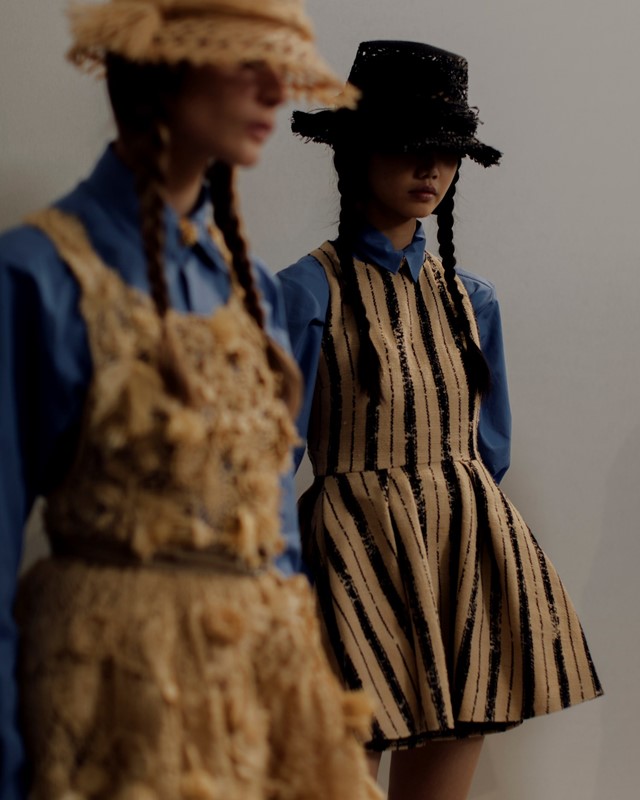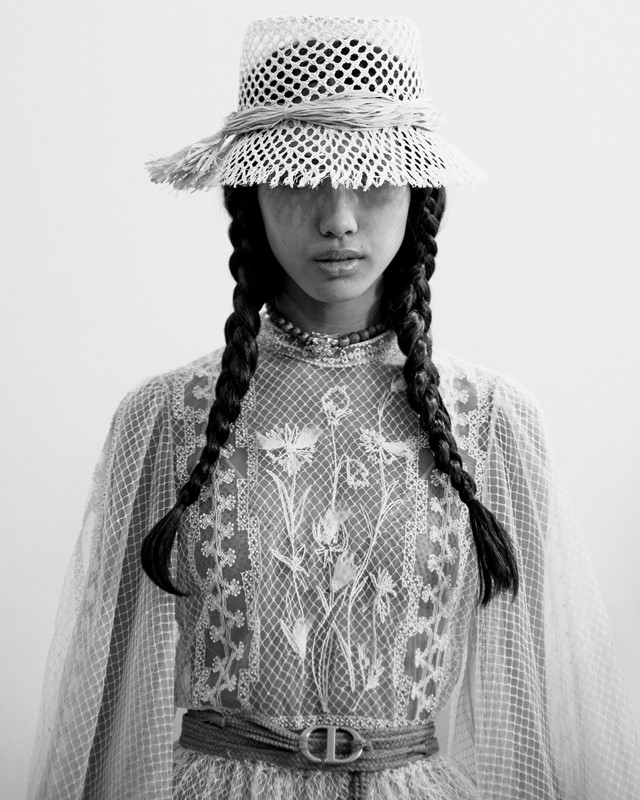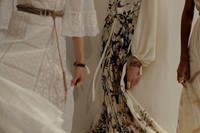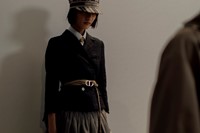Maria Grazia Chiuri was inspired to celebrate flowers and nature for Dior’s Spring/Summer 2020 collection, after discovering a photograph of Christian Dior’s sister Catherine
Maria Grazia Chiuri’s collections for Dior have been defined by a near-academic examination of the house’s archives. She has found inspiration not simply in Monsieur Dior’s waspish waistlines and much-riffed-upon bar jacket, but lesser-known collections, too – Dior’s 1951 Lascaux collection and its cave-painting prints inspired Chiuri’s Cruise 2018 show – and lesser-known designers in the pantheon of those who have worked for the house, like Marc Bohan, whose 1960s collections inspired her own S/S18 collection.
And it has taken her deeper than clothes – such was the case for yesterday’s Spring/Summer 2020 collection, which began with Chiuri discovering a photograph of Christian Dior’s sister, Catherine Dior, in one of the family’s albums. Her story particularly struck Chiuri: Catherine was an active member of the French Resistance, later captured by the Nazis and sent to Ravensbrück, an all-female concentration camp in northern Germany. She would survive, returning to Paris to sell her beloved flowers at the city’s Les Halles market (there, she was one of the only women to be granted a licence to trade as a Mandataire en fleurs coupées, a ‘cut flowers broker’).
Chiuri has often drawn upon such proto-feminists – and, indeed, contemporary feminists – but Catherine proved to have an irresistible appeal: the amalgam of strength, courage and resistance, with the intrinsic femininity of the flowers on which she would build her life after the war (she was also, as the story goes, the ‘Miss Dior’ behind her brother’s first fragrance). Flowers were of great import for Monsieur Dior himself, too – “fortunately, there are flowers,” he is quoted as saying in the press release. And, like his sister, he was an avid gardener.
As such, the show space – a vast construction in the grounds of the Longchamp Racecourse in Paris’ Bois de Boulogne – conjured a garden, though not one of pruned delicacy as might be expected of the couture house. Instead, models wove their way through a woodland of 160 free-standing trees, which Chiuri called a tribute to Catherine – a woman “free, independent, in harmony with nature and the cycle of the seasons”. But it was a contemporary statement, too: the trees came courtesy of Paris-based Coloco, a group of urban gardeners, who will replant them inside and outside of France. “I see all the concerns about our future, and the need to take action,” Chiuri said of the current need to address the future of our planet. “I was asking myself, how can we celebrate nature in a meaningful way?”

So there was earthy raffia and ombré workwear denim, straw sun hats and acid-wash boiler suits, fit for the female gardener; pretty diaphanous gowns printed with tangled flora or growing sunflowers, and sheer skirts embroidered with wild flowers. Sportier notes were struck with pullover hooded parkers – replete with the Christian Dior monogram – and floral bra tops. Chiuri was keen to point out that the species of flowers depicted across the collections came from various different countries of the world: “an ode to diversity unfolding across a wealth of plant species,” the notes explained, to create an “inclusive garden of co-existence”.
Of course, florals for spring are nothing new – as the venerable Miranda Priestley famously once pointed out – and yet depictions of nature take on a renewed urgency as ecosystems around the world come under real and present threat. “It appeared essential to me that [Christian Dior’s] legacy be addressed with a new perspective: flowers and plants don’t just serve an ornamental purpose, they are our environment,” said Chiuri. “We have a commitment to care for them, today more than ever.”






